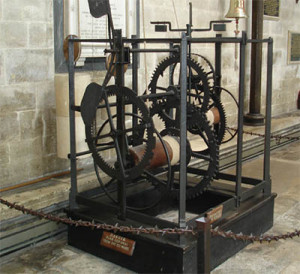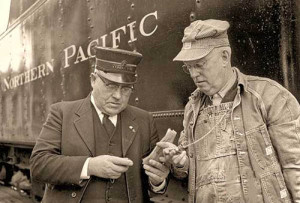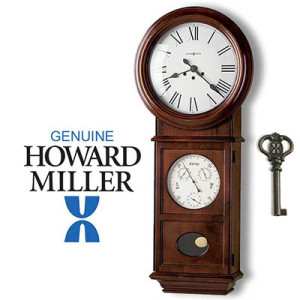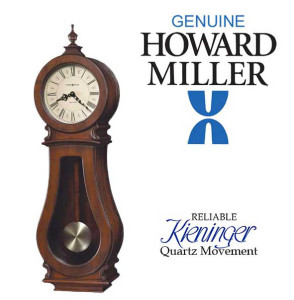Keeping Up With the 'Time'
Posted by Magnolia Hall on Apr 16th 2015
It’s usually not too difficult for us to find out what time it is. All we have to do is look at our watch, phone, or look around for a clock. But, keeping track of the time was not always so convenient, or accurate. In fact, there was a time when neighboring towns didn’t even keep the same time. Why would that be?

If you lived in England before the 1840’s you could usually find a clock in the main Church in town, which was controlled by weights. In fact, the oldest working mechanical clock today is in Salisbury Cathedral. It dates back to 1386. It has no dial, only chimes. (our word for clock comes from the Latin word for “bell”; Clocca). So people would just listen for the sound of the clock chime to know what time it was. Now, I wasn't alive in the 1800’s, but this made me think of my youth, growing up in California. There was a clock in our town that would chime periodically throughout the day.
But, in centuries past, as we already mentioned, these timepieces would not necessarily agree with other clocks. They would not consult with neighboring towns to make sure they were synchronized. After all, there wasn't much of a need! It wasn't until the railways “connected” the towns by rail, that a need for centralized timekeeping was necessary. After all, if a train left one town it had to keep it’s time schedule down the line. So, in 1884, international time zones were formed.

So, now we fast-forward to today. It would be impractical for us to listen for the “town clock” to chime and keep us on time. Today’s life is too time-oriented! We make appointments, meet deadlines, and structure our day around knowing what time it is. And other people depend on us to be “on time”. But, as you can see above, the Salisbury Cathedral Clock is not decorative, but rather it was designed to function, and function it has, for many years!
To accommodate our need for decorative timekeeping, Magnolia Hall has chosen to offer you a fine collection of clocks from Howard Miller, one of the leading names in the industry. Since many times space in our homes is at a premium, we offer beautiful wall and mantel clocks that not only tell time, but add an element of romance to any room. We offer two styles; the traditional key-wound, and quartz movement clocks.

The key-wound clocks add an element of nostalgia and authenticity. To assure proper performance, they must be fully wound. Most clocks are eight day clocks, so will need winding once a week. One good suggestion is to pick a time on a certain day and always wind at approximately that time. Sunday is a traditional day for winding clocks. One person said: “I do it around midday, as neither hand would block any of the winding holes.”

A quartz clock is a clock that uses an electronic oscillator that is regulated by a quartz crystal to keep time. The first quartz clock was built in 1927 by Warren Marrison and J.W. Horton at Bell Telephone Laboratories. Since the 1980s, quartz timekeepers have become the world's most widely used timekeeping technology, used in most clocks and watches.
Since we don’t live in 1800’s England, knowing the time of day is very convenient. Why not make keeping time a design element in our home? A wall or mantel clock will add warmth to your home that you will find practical AND enjoyable. You may just find that you will fall in love again with that old timekeeping friend…..the clock.

